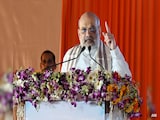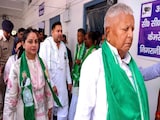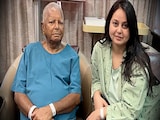Chief of Defence Staff Gen Anil Chauhan, while emphasising the need for achieving jointness and integration in the armed forces, has said that each service will "retain its individual identity", and their best practices will be incorporated.
During an interactive session held at an event here on Saturday, he also cited instances from the recent Operation Sindoor that demonstrated the jointness among the three services -- Army, Navy and the Air Force.
He took part in the two-day Indian Military Heritage Festival hosted by the defence think-tank USI, from November 14-15.
During the interaction, centred around his new book -- 'Ready, Relevant and Resurgent II: Shaping a Future Ready Force', he hinted that there may be a third volume in the offing, which would also have details related to Operation Sindoor.
Asked about the government's vision to achieve jointness and integration among the three services of the armed forces, he cited a few examples from the recent military action of India in the aftermath of the Pahalgam terror attack on April 22, and the days that preceded the precision strikes.
On May 7, Indian armed forces struck multiple terror infrastructure in Pakistan and Pakistan-occupied Kashmir (PoK).
The CDS said, while the efforts are underway in line with the vision of jointness, each service will "retain its individual identity", as that is important, since they have a specific kind of role, so there is no dilution in it.
"We are trying to take the best practices from each service... not the lowest common denominator, but the highest common factor, we are trying," he added.
The CDS further said that during the period of April 22-May 7, there was a need to reassess as to what is "our requirement of assets" which had to be moved to the western side, and it required a lot of movement by air.
It was "seamlessly done", the general officer asserted.
"I didn't even get to know, neither did the service chiefs, it was done at one-star level (officer)," he said.
The CDS also underlined how, for achieving integration, all the three services have common equipment, such as MRSAMs and BrahMos.
"And, the inventory is available and.. able to speak to each other. So, we are at a particular stage in integration," he said.
The officer further shared that the Navy also took part in a "couple of these strikes which took place across the border".
"They used their equipment PALM 400 and PALM 120, which is a loiter munition, which has a very long range, which was available with the Navy.
"Unfortunately, this was not known to the Army and the Air Force. But, it was known to Headquarters IDS, because we integrate things. We offered it to the Army, and the Air Force..it was a joint.. MARCOS went to land borders along with the Air Force and the Army," he said.
The CDS also spoke of fostering a "joint culture" in the military, in line with the planned theaterisation.
"Suppose you have a joint headquarters or theatre headquarters in the future, you will have staff which is common. This.. has to be trained in a common manner, which we are trying to do in a (joint) staff college. We are developing a joint culture," he said.
During the interaction, Gen Chauhan also said that "human geography" along with physical geography is equally important in understanding warfare, especially in counter-insurgency and counter-terrorism operations.
"When we are talking of cognitive warfare, psychology warfare, social engineering, unless we don't understand the human geography of that particular place, I don't think it's possible," he added.
So, both geographies are important and will remain relevant for times to come, physical as well as human geography, the CDS asserted.
"In any kind of a war, how do we win, we win by creating asymmetries against the adversary. These asymmetries are easy to create in new domains, not in old domains," the officer said.
So, when warfare was taking on land, people invented maritime domain, so there one could create asymmetries and influence a warfare, he underlined.
"Similarly, if you look at air power. So, today, we are at the cusp, where the traditional domains of land, maritime and air are over, and new domains are important. Space is an important domain, and if there are asymmetries, other nations will exploit these asymmetries to defeat you in space first, and warfare in other domains will come later," he said.
In the older domain, the "fight will always be bloody, very, very bloody. It will be difficult, hard-slogging match. But, in the new domain, it will be smart, fast and technology-intensive, so you will win in that new domain," the CDS said.
The third edition of the festival brought together senior military leaders, policymakers, diplomats, scholars, authors, think-tanks, industry representatives and the public.
It was inaugurated by Minister of State for Defence Sanjay Seth in the presence of the CDS.
The festival also featured an exhibition of iconic military paintings by Lt Col Arul Raj (retd) and the release of notable publications, including The Sukraniti: Statecraft and Warcraft! Honours and Awards of the Indian Armed Forces; and 75 Years of India's Contribution to UN Peacekeeping.
(Except for the headline, this story has not been edited by NDTV staff and is published from a syndicated feed.)














